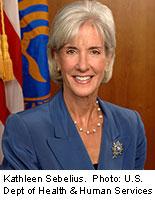
WEDNESDAY, Dec. 18, 2013 (HealthDay News) — The health insurance industry announced Wednesday that the payment deadline for those who buy health insurance through state and federal exchanges under the final provision of the Affordable Care Act, also known as Obamacare, has been extended to Jan. 10.
The deadline was extended to make sure no one experiences any gap in coverage this January, according to a statement on the website of America’s Health Insurance Plans (AHIP), a trade group that represents the lion’s share of the industry.
Earlier this month, Obama administration officials had said that health insurers must accept payment up until Dec. 31 for coverage that begins the following day, and recommended that the payment deadline be extended further. The deadline for selecting a health insurance plan remains Dec. 23.
Roughly 365,000 people had selected a health plan by the end of November, a number well below initial projections. Those low numbers have been linked to the fumbled launch in October of Healthcare.gov, the federally run health insurance exchange. Many consumers in the 36 states served by the federal exchange encountered long lag times, timed-out web pages and other bugs while attempting to apply for coverage and enroll in a plan. Most of these problems have since been ironed out, health officials have said.
Now that HealthCare.gov is said to be working well for most users, efforts are focused on ways to guarantee that the uninsured and those whose health plans are being cancelled don’t fall through the cracks.
“The short time period in which consumers must complete these steps and have their enrollment processed, combined with the ongoing technical difficulties associated with Healthcare.gov, could mean that for some consumers, coverage may not be able to begin Jan. 1,” the AHIP said in its statement.
“To help provide peace of mind to consumers, AHIP’s Board of Directors announced that health plans are voluntarily extending the deadline for consumers to pay their first month’s premium,” the statement added. “Consumers who select their plans by Dec. 23 and pay the first month’s premium by Jan. 10 will now be able to have coverage retroactive to Jan. 1. It is important for consumers to remember that they must pay their first month’s premium before coverage takes effect.”
The consumers who are at risk of experiencing gaps in coverage include nearly 86,000 Americans in PCIPS, known as “pre-existing condition insurance plans.” Those temporary health plans are being phased out because the Affordable Care Act, beginning in 2014, bans people from being excluded from coverage based on their health status.
To prevent a gap in coverage, officials from the U.S. Department of Health and Human Services said, benefits would be available for an additional month as beneficiaries transition to a health exchange plan.
For health reasons, the department wants insurers to continue paying for consumers’ prescriptions through January for medications covered under a previous health plan.
Likewise, health officials are concerned some consumers may have selected a health plan using an outdated provider directory. In addition to posting current provider directories, HHS asks that insurers treat out-of-network coverage as in-network coverage in the beginning months of enrollment.
More information
Learn how to get insurance coverage through the new health exchanges.
Copyright © 2026 HealthDay. All rights reserved.

